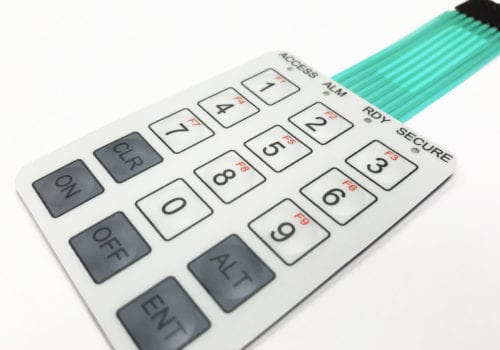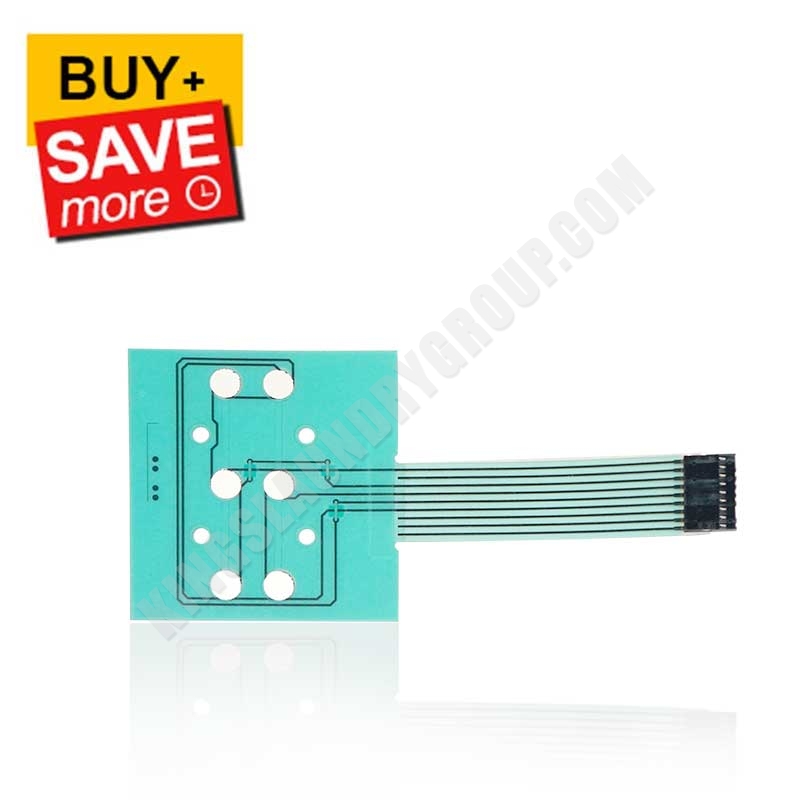Just How to Guarantee Long Life and Reliability with a High-Quality Membrane Switch
Just How to Guarantee Long Life and Reliability with a High-Quality Membrane Switch
Blog Article
Recognizing the Capability of Membrane Switches for Individual User Interface Instruments
The capability of membrane layer changes stands for a considerable development in individual interface layout, combining performance with visual versatility. As markets progressively prioritize individual experience, recognizing the subtleties of membrane layer switch modern technology becomes essential.
What Are Membrane Buttons?
Membrane layer switches are cutting-edge interface tools that facilitate individual interaction with digital devices. These functional parts include multiple layers, consisting of a visuals overlay, spacer, and a published circuit layer. The design enables a seamless assimilation into numerous electronic tools, boosting both the aesthetic and functional elements of customer interfaces.
Membrane buttons are typically used in a wide variety of applications, from house devices to industrial equipment and clinical tools. Their building usually includes a thin profile, making them an optimal choice for compact designs. The responsive comments provided by these buttons can be crafted to meet details user preferences, guaranteeing efficient interaction in between the customer and the tool.
Sturdiness is another significant advantage of membrane layer switches, as they are resistant to dust, moisture, and chemicals, which boosts their life-span popular settings. In addition, these switches can be personalized in regards to form, size, and graphic design, permitting for branding and user-specific functions. In general, membrane layer changes represent a functional remedy for improving customer experience in digital tools, incorporating functionality with visual appeal in an efficient way.
Just How Membrane Switches Job
Operating on a simple principle, membrane changes use a layered construction to sign up individual input effectively. Each button consists of numerous layers, consisting of a published circuit layer, a spacer layer, and a top visuals layer, which are made to collaborate effortlessly. When an individual presses the leading layer, it presses the spacer layer, bringing the conductive aspects of the circuit layer into contact with each various other.
This call develops a shut circuit, signifying the device to perform a certain feature. The layout permits different setups, including responsive responses, which can improve the user experience by supplying a physical experience upon activation. The materials used in membrane layer buttons commonly consist of adaptable substrates, such as polyester or polycarbonate, which make certain toughness and durability versus deterioration.

Secret Advantages of Membrane Buttons

An additional considerable benefit is their density. Membrane switches are slim and lightweight, which makes it possible for producers to save room in their gadgets without Read Full Article sacrificing functionality. This feature is especially valuable in applications where weight and volume are vital factors to consider.
Furthermore, membrane buttons are immune to dirt, moisture, and chemicals, enhancing their toughness. This resilience extends their lifespan and lowers the requirement for regular replacements, resulting in expense savings gradually.
In addition, the tactile comments offered by membrane buttons can be optimized to boost individual communication. They can include attributes such as increased buttons or audible clicks, enhancing functionality and user experience.
Applications Across Industries
User user interface devices making use of membrane buttons are widespread in a broad range of industries, showcasing their adaptability and performance. Membrane Switch. In the clinical sector, membrane layer buttons are important to devices such as analysis equipment and individual surveillance systems, where their sturdiness and simplicity of cleaning are crucial for preserving hygiene requirements. In the automotive sector, these switches are employed in dashboard controls and infomercial systems, providing a streamlined and contemporary user interface for customers.
Furthermore, the consumer electronic devices sector take advantage of membrane layer switches in devices and handheld tools, where small layout and easy to use user interfaces enhance customer experience. Industrial applications likewise take advantage of membrane layer changes for control panels in machinery and automation systems, highlighting their toughness and resistance to severe settings.
In the aerospace and defense industries, membrane layer switches are utilized in cabin important link controls and tools, where reliability and performance under severe conditions are paramount. Additionally, the video gaming sector progressively incorporates membrane buttons in controllers and gallery makers, contributing to an appealing individual experience. Overall, the convenience of membrane switches allows their prevalent usage you can check here across countless fields, emphasizing their relevance in modern interface design.
Future Trends in Membrane Layer Change Technology

Additionally, the usage of innovative products, such as polycarbonate and polyester movies, is expected to rise, giving enhanced durability and resistance to environmental stress factors. These products add to the total long life of membrane switches, making them ideal for harsher commercial applications.
In addition, the incorporation of wise modern technology, consisting of IoT connection, will enable membrane buttons to connect with various other tools and systems, promoting a much more interactive user experience. This pattern straightens with the expanding need for clever tools throughout various markets, from healthcare to customer electronic devices.
Lastly, modification options are prepared for to expand, enabling manufacturers to produce bespoke services customized to details user requirements and preferences. These growths will place membrane switches as important elements in the advancement of interface innovation.
Conclusion
In conclusion, membrane layer switches over stand for an essential development in individual interface modern technology, supplying a trusted and versatile service for varied electronic applications. As improvements in material scientific research and touch noticing innovations continue, the capability and applicability of membrane buttons are expected to expand, reinforcing their significance in contemporary electronic tools.
Report this page